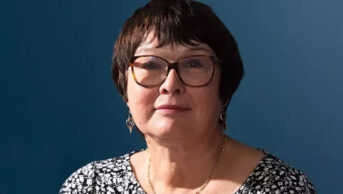
Shutterstock.com
Pharm
acy teams are often tasked with supporting other health professionals to optimise the way medicines are used. Most commonly we either adapt existing training from our own hospital trusts or share work from colleagues to produce resources to support practice. Sometimes we are approached by others or by our own profession to address a need to develop skills in a particular area.
At the medicines use and safety (MUS) division of NHS Specialist Pharmacy Service in England, we have created a variety of resources for use in primary and secondary care, including during learning events and in clinical practice. Different resources should be developed in different ways — so how can pharmacists identify the need for a resource and, once they have, how should they proceed?
Identifying a need
In February 2014, a learning event was provided for pharmacy teams working with patients who had suffered a stroke. The day was created as a taster to test interest in three clinical areas — managing aphasia in pharmacy consultations, pharmaceutical needs of dysphagic patients and new oral anticoagulants (NOACs). Participants were asked to complete evaluation forms at the event.
It was this feedback that led the MUS team to identify the need for two new resources, because participants identified their knowledge gap in managing dysphagia and aphasia.
Learning events are one useful way of identifying areas in which new resources may be helpful. However, pharmacists may also discover a gap in available resources during everyday practice. For example, at the MUS division we found that we were encountering an increasing number of patients with long-term conditions and multiple morbidities, meaning that polypharmacy is becoming the rule rather than the exception.
Once you have identified a potential need for a resource, it is important to establish exactly where the niche lies. Although we reviewed four resources that provided detailed and high quality information about managing polypharmacy, they focused on the medicines-related aspects of review, rather than concentrating on the patient. Therefore, we sought to create a tool for practice that put the patient at the centre of the process.
Similarly, although there were a number of excellent resources that supported communication with patients who have aphasia, we identified no specific support for consultations with patients who have aphasia about anticoagulation. We contacted pharmacist anticoagulation experts and speech and language therapists, who agreed that there was no such resource. For dysphagia, there were a number of texts available to support use of liquid medicines and crushing medicines. However, none addressed the issues of the spectrum of swallowing difficulties.
Creating the resource
Having established that a new clinical resource is necessary, it is time to decide on the content and scope of the tool. For our aphasia and dysphagia resources, we ran two consecutive half-day events in October 2014, in order to provide learning for pharmacists working with stroke patients and gain insight into what was required from the tools. Participants were asked to bring or review their current warfarin counselling guidelines for aphasia and identify the resources they currently used to support patients with dysphagia.
For the aphasia resource, participants were asked to identify areas for counselling of patients who were prescribed warfarin. The participants were then divided into four groups, each focusing on two of the eight points identified. The groups worked with the speech and language therapists and the expert pharmacists to create the first draft of the resource.
This process was also used for the dysphagia resource. However, the workshop outputs were around creation of a flowchart to support practitioners and groups were encouraged to develop a list of “top tips” for managing patients with dysphagia.
Choosing a format
When you first begin putting a resource together, it is important to consider what format will best suit the audience and have maximum impact. Additionally, the format must suit your capabilities and price range.
The format for our aphasia resource developed organically. Originally, we had envisaged it as a simpler version of the prose found in most of the warfarin counselling documents. Working with the speech and language therapists, however, we realised that this was the least aphasia-friendly format we could use. We worked with the therapists, aphasia experts and patients to develop a resource that reflected accepted best practice for written communication with patients who have aphasia. This meant we produced a set of slides with pictures and few words.
The participants at the learning event shaped the dysphagia resource, because they requested a set of frequently asked questions. We developed the idea of a flowchart as the day progressed and this was adopted as a suitable method of guiding health professionals through choosing a method to support patients with dysphagia who require medicines.
Developing the resources
Once you have developed a first draft of the resource, the content and design must be reviewed to ensure it is fit-for-purpose, easy to use and addresses the original problem. Expert input is a vital element in making sure the content of the resource is appropriate.
Although we used the four existing resources and other medicines information to develop the polypharmacy resource ourselves, we asked an internationally recognised expert in the field to review the resulting pathway. We incorporated these comments before asking practitioners (including prescribers) who worked directly with patients undertaking medicines reviews to test the tool and comment on it. The first draft of the resource was published on the MUS website in September 2014 and we continued to receive views and comments. Some of these comments were used to modify the document, which we then sent out to a small number of colleagues and stakeholders for further feedback.
The draft aphasia resource was reviewed for content by anticoagulation consultant pharmacists and other experts in the field through the UK Clinical Pharmacy Association. This version was reviewed by speech and language therapists to ensure that it was clear and appropriate.
National senior stroke pharmacists took the lead in producing the dysphagia resource, in collaboration with a consultant pharmacist in cardiovascular medicines and speech and language therapists. The resource was edited between these three experts to create a document that included both a flowchart and frequently asked questions for managing patients with dysphagia.
Since all the contributors have many other commitments, including their normal roles, it can be a challenge to ensure prompt response times to emails, which can mean delays to the editing process. This was managed through agreeing realistic timescales and quantities of work with each individual and aligning, wherever possible, the requirements of the resource with other work that the contributor was currently undertaking. Some contributors were able to delegate parts of their work and secured small amounts of funding to support it.
For the aphasia resource, we also sought comments from patient advocacy groups and from patients in anticoagulation clinics. Patient comments included positive feedback on the benefit of the resource and constructive criticism on the nature of the images used, which they believed did not convey the appropriate messages or were difficult for elderly people, especially those with poor eyesight, to understand.
As well as requiring images with the correct permissions, the aphasia resource had additional challenges. There were cost implications of creating a resource that required external non-NHS support. For example, one patient group requested payment to review the aphasia resource and we did not have funding for this. Instead, one of our contributors asked a contact in their local trust to review the resource and another patient group who contributed comments for no charge.
The final draft of the resource has now been uploaded on to the MUS website to encourage the original attendees at the October 2014 event and other health professionals to review it. Users are asked to comment on how useful the resource is and who they feel could benefit from it. We plan to amend the resource in the light of further feedback towards the end of 2015.
Disseminating and evaluating the resources
Finally, once a resource is published, it is only useful if it is widely and easily accessible. We have publicised the final draft of our aphasia tool in our monthly updates and will be monitoring website hits to indicate interest and uptake.
It is important to monitor the success and usefulness of a resource continually to ensure it is doing what it is intended to do. Firstly, think about what you want to measure and how this can impact on development. There are a number of ways to collect data, including use of questionnaires or online surveys, interviews and focus groups. You need to decide what data you want to collate and in what level of detail. Simple quantitative data on usage of your resource can be obtained through monitoring website hits. If you wish to develop your resource further, there is merit in running bespoke evaluation events which can be used to work on the next version of a resource.
Additionally, we have submitted our polypharmacy resource for publication in a peer-reviewed journal and are hoping to conduct a survey of pharmacy prescribers who undertake polypharmacy reviews to understand the value of the tool in practice.
Top tips for developing a resource
- When you identify the need for a resource, make sure someone else is not already working on it. It may not be published yet, so contact experts in the field to ask.
- Test the need for your potential resource on a few relevant people, including stakeholders, users and experts who you think might use it.
- When you start the work, make sure you have the time set aside for the whole project and have the support you need from your manager and others.
- Circulate a draft of the resource to get comments before you become wedded to what you have produced — it is easier to make changes earlier rather than later. Remember that you learn more from criticism that you do from praise.
- When you publish your work, remember to use a number of different routes to disseminate the message.
Acknowledgements
Aphasia resource: Satinder Bhandal, consultant pharmacist in anticoagulation, Buckinghamshire Healthcare NHS Trust; Frances Akor, consultant pharmacist in anticoagulation, Imperial College Healthcare NHS Trust; Claire Cahoon, highly specialist speech and language therapist, Regional Rehabilitation Unit, Northwick Park Hospital; Katrina Clarkson, principal speech and language therapist, Regional Rehabilitation Unit, Estelle Bloom, Making it Clear (www.makingitclearuk.com); and participants in the medicines use and safety team learning event of October 2014.
Dyphagia resource: Paresh Parmar, Danielle Thompson, acting principal speech and language therapist — acute and stroke, Northwick Park Hospital; Natalie Griffin, acting principal speech and language therapist — acute and stroke, Northwick Park Hospital; Helen Williams, consultant pharmacist for cardiovascular disease, South London; and participants in the medicines use and safety team learning event of October 2014.
Polypharmacy resource: Nina Barnett, consultant pharmacist — care of older people, and Lelly Oboh, consultant pharmacist — older people, Medicines Use and Safety Team, NHS Specialist Pharmacy Service, England; Katie Smith, director, East Anglia Medicines Information Service, Ipswich Hospital.
Learning events and resources were supported Samantha Xavier-James, data analyst and administrator, Medicines Use and Safety Team, NHS Specialist Pharmacy Service.


